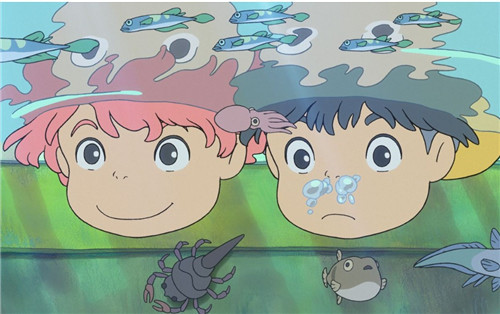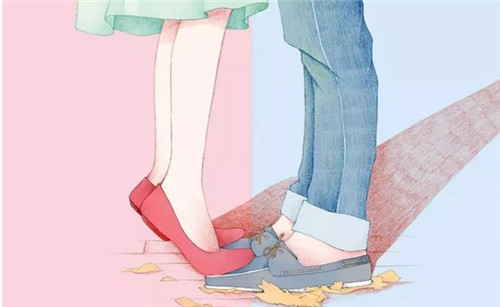GRE之OG2阅读真题精选整合
时间:2021-07-02 13:31:57
在备考GRE阅读的过程中,练真题是必不可少的流程,小编就和大家分享,来欣赏一下吧。
GRE阅读真题之OG2 Passage 21
OG-2
Passage 21
Even after numerous products made with artificial sweeteners became available, sugar consumption per capita continued to rise. Now manufacturers are introducing fat-free versions of various foods that they claim have the taste and texture of the traditional high-fat versions. Even if the manufacturers’ claim is true, given that the availability of sugar-free foods did not reduce sugar consumption, it is unlikely that the availability of these fat-free foods will reduce fat consumption.
1. Which of the following, if true, most seriously undermines the argument?
A. Several kinds of fat substitute are available to manufacturers, each of which gives a noticeably different taste and texture to products that contain it.
B. The products made with artificial sweeteners did not taste like products made with sugar.
C. The foods brought out in sugar-free versions did not generally have reduced levels of fat, but many of the fat-free versions about to be introduced are low in sugar.
D. People who regularly consume products containing artificial sweeteners are more likely than others to consume fat-free foods.
E. Not all foods containing fat can be produced in fat-free versions.
GRE阅读真题之OG2 Passage 22
OG-2
Passage 22
Recent studies of sediment in the North Atlantic’s deep waters reveal possible cyclical patterns in the history of Earth’s climate. The rock fragments in these sediments are too large to have been transported there by ocean currents; they must have reached their present locations by traveling in large icebergs that floated long distances from their point of origin before melting. Geologist Gerard
Bond noticed that some of the sediment grains were stained with iron oxide, evidence that they originated in locales where glaciers had overrun outcrops of red sandstone. Bond’s detailed analysis of deep-water sediment cores showed changes in the mix of sediment sources over time: the proportion of these red-stained grains fluctuated back and forth from lows of 5 percent to highs of about 17 percent, and these fluctuations occurred in a nearly regular 1,500-year cycle.
Bond hypothesized that the alternating cycles might be evidence of changes in ocean-water circulation and therefore in Earth’s climate. He knew that the sources of the red-stained grains were generally closer to the North Pole than were the places yielding a high proportion of “clean” grains. At certain times, apparently, more icebergs from the Arctic Ocean in the far north were traveling south well into the North Atlantic before melting and shedding their sediment.
Ocean waters are constantly moving, and water temperature is both a cause and an effect of this movement. As water cools, it becomes denser and sinks to the ocean’s bottom. During some periods, the bottom layer of the world’s oceans comes from cold, dense water sinking in the far North Atlantic. This causes the warm surface waters of the Gulf Stream to be pulled northward. Bond realized that during such periods, the influx of these warm surface waters into northern regions could cause a large proportion of the icebergs that bear red grains to melt before traveling very far into the North Atlantic. But sometimes the ocean’s dynamic changes, and waters from the Gulf Stream do not travel northward in this way. During these periods, surface waters in the North Atlantic would generally be colder, permitting icebergs bearing red-stained grains to travel farther south in the North Atlantic before melting and depositing their sediment.
The onset of the so-called Little Ice Age (1300-1860), which followed the Medieval Warm Period of the eighth through tenth centuries, may represent the most recent time that the ocean’s dynamic changed in this way. If ongoing climate-history studies support Bond’s hypothesis of 1,500-year cycles, scientists may establish a major natural rhythm in Earth’s temperatures that could then be extrapolated into the future. Because the midpoint of the Medieval Warm Period was about A.D. 850, an extension of Bond’s cycles would place the midpoint of the next warm interval in the twenty-fourth century.
1. According to the passage, which of the following is true of the rock fragments contained in the sediments studied by Bond?
A. The majority of them are composed of red sandstone.
B. They must have reached their present location over 1,500 years ago.
C. They were carried by icebergs to their present location.
D. Most of them were carried to their present location during a warm period in Earth’s climatic history.
E. They are unlikely to have been carried to their present location during the Little Ice Age.
2. In the final paragraph of the passage (lines 47-59), the author is concerned primarily with
A. answering a question about Earth’s climatic history
B. pointing out a potential flaw in Bond’s hypothesis
C. suggesting a new focus for the study of ocean sediments
D. tracing the general history of Earth’s climate
E. discussing possible implications of Bond’s hypothesis
3. According to the passage, Bond hypothesized that which of the following circumstances would allow red-stained sediment grains to reach more southerly latitudes?
A. Warm waters being pulled northward from the Gulf Stream
B. Climatic conditions causing icebergs to melt relatively quickly
C. Icebergs containing a higher proportion of iron oxide than usual
D. The formation of more icebergs than usual in the far north
E. The presence of cold surface waters in the North Atlantic
4. It can be inferred from the passage that in sediment cores from the North Atlantic’s deep waters, the portions that correspond to the Little Ice Age
A. differ very little in composition from the portions that correspond to the MedievalWarm Period
B. fluctuate significantly in composition between the portions corresponding to the 1300s and the portions corresponding to the 1700s
C. would be likely to contain a proportion of red-stained grains closer to 17 percent than to 5 percent
D. show a much higher proportion of red-stained grains in cores extracted from the far north of the North Atlantic than in cores extracted from further south
E. were formed in part as a result of Gulf Stream waters having been pulled northward
GRE阅读真题之OG2 Passage 23
OG-2
Passage 23
As an example of the devastation wrought on music publishers by the photocopier, one executive noted that for a recent choral festival with 1,200 singers, the festival’s organizing committee purchased only 12 copies of the music published by her company that was performed as part of the festival.
1. Which of the following, if true, most seriously weakens the support the example lends to the executive’s contention that music publishers have been devastated by the photocopier?
A. Only a third of the 1,200 singers were involved in performing the music published by the executive’s company.
B. Half of the singers at the festival had already heard the music they were to perform before they began to practice for the festival.
C. Because of shortages in funding, the organizing committee of the choral festival required singers to purchase their own copies of the music performed at the festival.
D. Each copy of music that was performed at the festival was shared by two singers.
E. As a result of publicity generated by its performance at the festival, the type of music performed at the festival became more widely known.
GRE阅读真题之OG2 Passage 24
OG-2
Passage 24
A tall tree can transport a hundred gallons of water a day from its roots deep underground to the treetop. Is this movement propelled by pulling the water from above or pushing it from below? The pull mechanism has long been favored by most scientists. First proposed in the late 1800s, the theory relies on a property of water not commonly associated with fluids: its tensile strength. Instead of making a clean break, water evaporating from treetops tugs on the remaining water molecules, with that tug extending from molecule to molecule all the way down to the roots. The tree itself does not actually push or pull; all the energy for lifting water comes from the sun’s evaporative power.
1. Which of the following statements is supported by the passage?
A. The pull theory is not universally accepted by scientists.
B. The pull theory depends on one of water’s physical properties.
C. The pull theory originated earlier than did the push theory.
2. The passage provides information on each of the following EXCEPT
A. when the pull theory originated
B. the amount of water a tall tree can transport
C. the significance of water’s tensile strength in the pull theory
D. the role of the sun in the pull theory
E. the mechanism underlying water’s tensile strength
GRE阅读真题之OG2 Passage 25
OG-2
Passage 25
While the influence of British magazines in shaping public opinion predates the nineteenth century, it was during the 1800s that mass distribution became possible and an explosion in periodical readership occurred, vastly increasing magazines’ opinion-shaping powers. The role of magazines as arbiters of nineteenth-century taste is seen in their depictions of the London theater. The magazines accorded some legitimacy to East End working-class theaters that mirrored the format of the fashionable West End theaters serving middle- and upper-class audiences. However, the magazines also depicted music halls—which competed for patronage with all theaters—as places where crass entertainment corrupted spectators’ taste and morals. Finally, they suggested that popular demand for substandard fare created a market unfriendly to higher expressions of dramatic art.
1. The author of the passage attributes the influence of British periodicals in shaping public opinion in the nineteenth century in part to
A. a growing public interest in reading opinion pieces
B. an increase in the relative number of readers from the middle and upper classes
C. changes in the way in which magazines were distributed
D. magazines’ increased coverage of theater and popular entertainment
E. changes in magazine format that attracted a wider readership
2. The author of the passage mentions East End working-class theaters primarily in order to
A. illustrate a point about the ability of magazines to sway public opinion
B. contrast the kinds of entertainment presented in East End and West End theaters
C. make a point about how spectators’ tastes influenced the offerings at different kinds of theaters
D. explain how magazines chose which kinds of entertainment to cover
E. identify factors that helped make certain theaters fashionable
3. In the context in which it appears, “accorded” (line 9) most nearly means
A. reconciled
B. revealed
C. granted
D. verified
E. maintained
21
B
22
C
E
E
C
23
C
24
AB
E
25
C
A
C
GRE之OG2阅读真题精选整合相关文章:
- 上一篇:雅思阅读背景知识精选
- 下一篇:GRE阅读真题之OG精选





